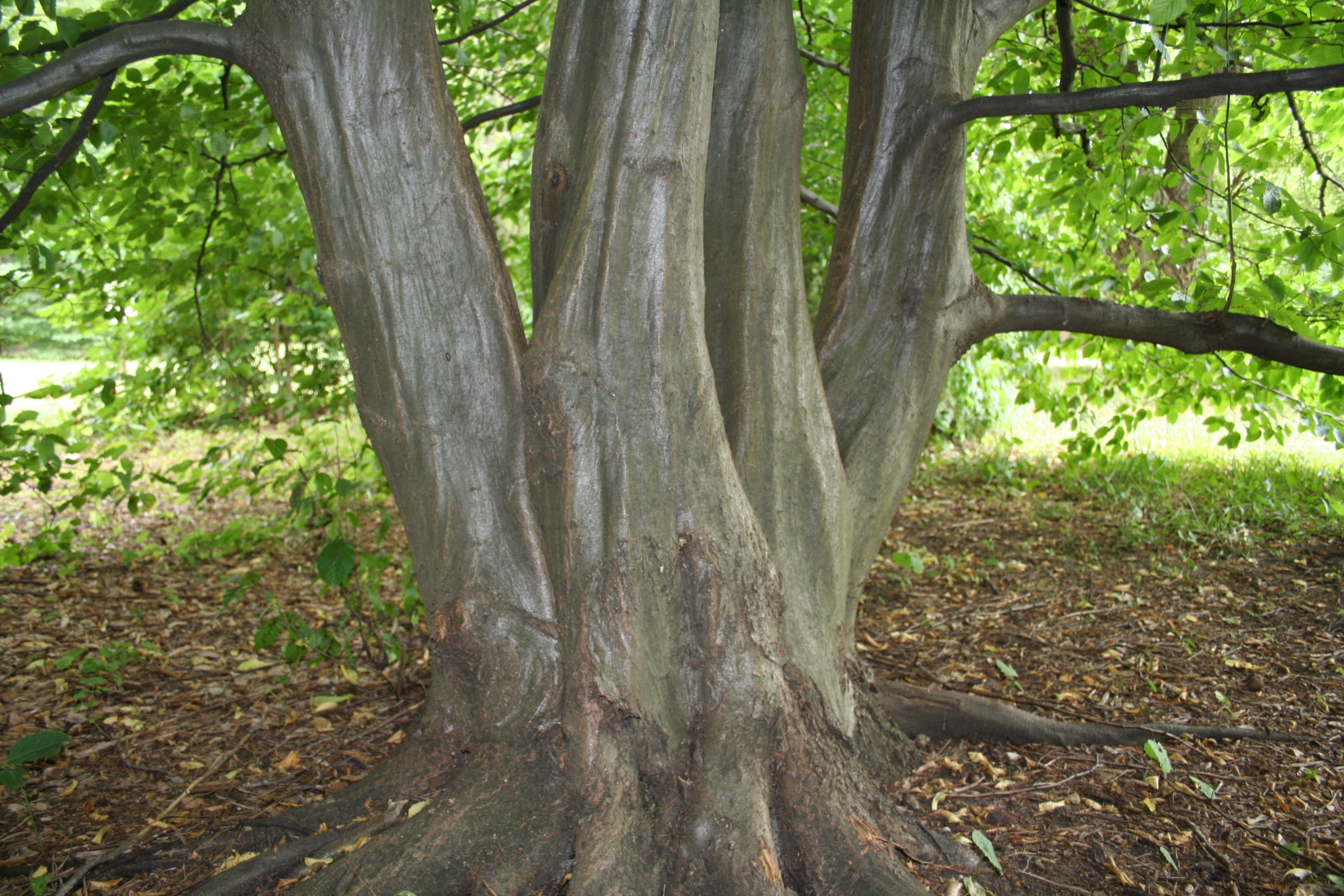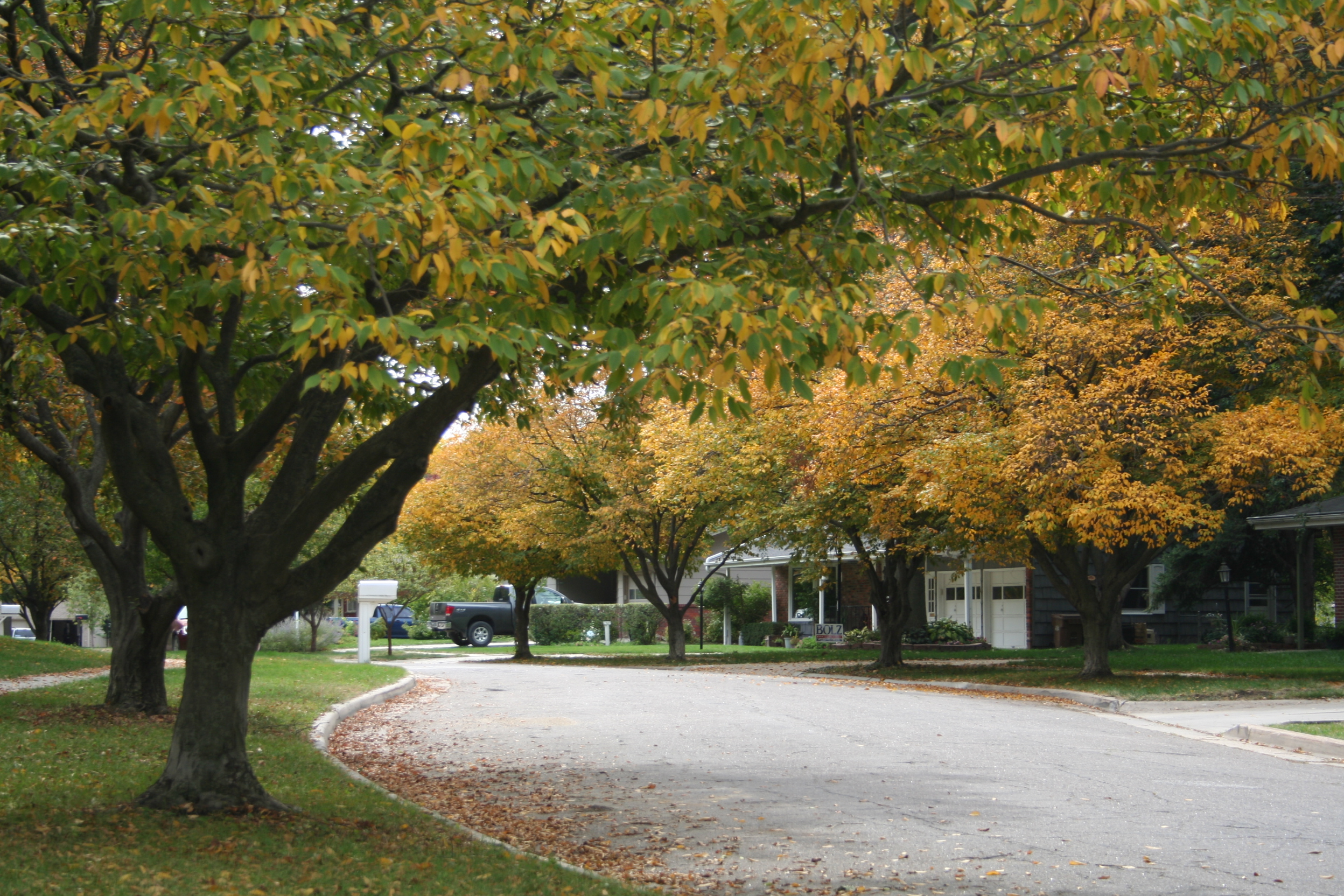Hornbeam, American (Musclewood)
Carpinus caroliniana, Deciduous
American hornbeam, also known as musclewood or blue beech, is a small, slow-growing understory tree native to hardwood forests of the eastern US and Canada. The tree is perhaps best known for its smooth and sinewy steel-gray bark and the muscle-like look of its maturing trunk and larger branches (thus one of its common names).

Where To Grow

Size at Maturity
| Tree Height | Tree Spread |
| 15-25' | 15-25' |
Tree Characteristics
American hornbeam is a small, slow-growing, understory tree with an attractive natural, rounded form growing 15-30' tall and wide. The smooth, gray trunk and larger branches of a mature tree exhibit a distinctive muscle-like fluting. The dark-green leaves are coarsely serrated and often turn shades of yellow, orange and red in the fall. Its catkin flowers give the tree away as a member of the birch family. The female flowers give way to distinctive clusters of winged seeds that somewhat resemble the hops-like seeds of ironwood.
Wildlife Benefits
Seeds, buds, or catkins are eaten by a number of songbirds, ruffed grouse, ring-necked pheasants, bobwhite, turkey, fox, and gray squirrels. Cottontails, beaver, and white-tailed deer eat the leaves, twigs, and larger stems. Beaver heavily uses American hornbeam, because it is readily available in typical beaver habitat.
Utilization
Hornbeams have extremely hard wood used for tool handles, longbows, walking sticks/canes and golf clubs.
Additional Considerations
Hornbeams suffer few if any serious insect or disease problems but is generally intolerant of tough, urban conditions. It needs careful siting to do well.
Related species
- Common Hornbeam (Carpinus betulus) is a European and Asian species that grows significantly larger than its American cousin (about twice the size). Otherwise, it is very similar, including the sinewy smooth bark and muscle-like trunk and branches.
- A more narrow and upright variety of the species called “Upright European Hornbeam” has become quite common as a landscape tree in eastern Nebraska in recent years. It is expected to grow 40-50’ tall and 20-25’ wide.
Interesting Facts
The name hornbeam derives from its extremely hard wood that takes a “horn-like” polish and was once used by early Americans to make bowls, ox yokes and tool handles. The “beam” in hornbeam refers to the beam of wood that separated the ox bows.
References
- Tips for success
- NRCS Plant Guide
- Developed by Justin Evertson, Kyle Martens, and Denise Wally

